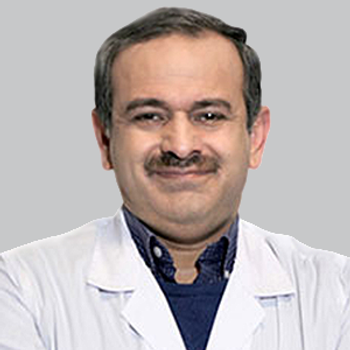
Oral Therapies in MS
Dr Okai provides an overview of oral DMTs available to patients with RRMS.
Episodes in this series

Ahmed Zayed Obeidat, MD, PhD: We’re going to transition to oral therapies in multiple sclerosis [MS] and focus on this for the rest of the episode. Nowadays we talk about classes, but back in the day we’d talk about medications. We talk about full classes of medications, and within each class we have several medications, which is a great problem to have. It’s great because sometimes within the class, there’s some small intricacy that for a specific patient, 1 medication from the class may be better than the other. This can help us select and personalize the treatment approach. I’d like to ask you to discuss with our audience and provide an overview, it can be brief, on the classes of oral medications used for relapsing-remitting multiple sclerosis.
Annette Okai, MD, FAAN: I’m happy to do that. Long gone are the days when you have 1, 2, 3, or 4 medications and then make a decision. Each class has more than 1 medication at this time. In terms of the oral medications available for multiple sclerosis, we have 4 classes, meaning that the mechanism of each class is different from 1 class to the other. The first class I’d like to touch on is called fumarates. Within that you have dimethyl fumarate, monomethyl fumarate, and so on. This class of medication has 1 common mechanism of action. When you have that in a class, you also see that the potential adverse effects may be the same, with a little variation.
Fumarates are in a class that work on oxidation, or oxidated stress as we call it in MS. But there are potential adverse effects. There may be GI [gastrointestinal] issues, and you have to counsel the patient regarding how to take the medication to reduce these potential adverse effects. I keep saying potential because that doesn’t mean that the patient is going to develop these adverse effects. It’s an effective class of medications, and we’ve seen this in several studies proven over time.
The second class I’d like to talk about is S1P. I’m using the initials as opposed to the long name, but it’s the sphingosine 1-phosphate class. This class has 4 medications: fingolimod, ponesimod, siponimod, ozanimod. They all carry that same thing. They’re also very effective in their own class. We’ve seen that with the initial drug fingolimod, the potential for lowering the heart rate below a certain threshold was high, and patients needed to be monitored to take the first dose. With the newer drug in that class, there isn’t a requirement for monitoring because the cardiac effects are fewer.
I caution patients that even though we’re talking about potential adverse effects associated with the drug, the first thing we should think about is efficacy. Then I weigh that in terms of the benefit-risk profile. As time goes by, we seeing improvements in our medication with the risk is being lowered, in terms of how we’re monitoring and making sure that the patients are on a good process and following a certain protocol to make sure this medication is the best for them.
The third class is pyrimidine inhibitor, and this is where teriflunomide comes in. This works in a different way in that it restricts this type of amino acid from actively dividing cells, and that’s supposed to control the inflammatory rate. Once again, all these medications have been proven to be effective. The fourth class is purine synthesis inhibitor, and that’s where cryoglobulin is in. This has a unique mechanism of dosing: 10 days a year for 2 years, and then you monitor after 2 years.
In terms of what could potentially occur, we have to clear the patient for any type of malignancy and make sure there are no latent viruses before we initiate therapies. As you can see, I have 4 classes, and I have 9 to 10 medications in just 4 classes of older drugs. It’s exciting that we have these options in MS and can offer them to patients. We know how to monitor and treat these patients regardless of everything we see listed in terms of adverse effects. Because we’re familiar with it, we choose the right patient for the medication, thereby decreasing any risk to that patient. This is what we call risk mitigation, and this has helped us in the past. Most patients do quite well when we choose medication that’s aptly suited to their disease.
Ahmed Zayed Obeidat, MD, PhD: This is a superb summary of the existing oral therapies that we have for multiple sclerosis.
Transcript Edited for Clarity
Newsletter
Keep your finger on the pulse of neurology—subscribe to NeurologyLive for expert interviews, new data, and breakthrough treatment updates.




































